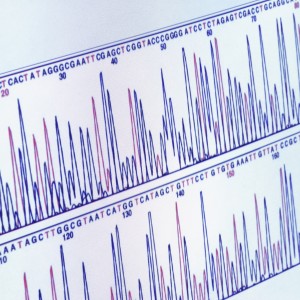Friedreich’s Ataxia Study Highlights New European Patient Cohort Will Aid Future Research

 A recent opinion article from two researchers at University of Naples Federico II, Italy, entitled “Movement disorders: Friedreich ataxia today – preparing for the final battle” and published in the journal Nature Reviews Neurology, focused on the results from a European consortium based on a cohort of patients with Friedreich’s ataxia, namely in terms of patient recruitment, clinical assessment and disease progression. The opinion article referred to the study led by researchers at the University Hospital Rheinisch-Westfälische Technische Hochschule in Germany, published in January 2015 in the journal The Lancet Neurology and registered under the number NCT02069509.
A recent opinion article from two researchers at University of Naples Federico II, Italy, entitled “Movement disorders: Friedreich ataxia today – preparing for the final battle” and published in the journal Nature Reviews Neurology, focused on the results from a European consortium based on a cohort of patients with Friedreich’s ataxia, namely in terms of patient recruitment, clinical assessment and disease progression. The opinion article referred to the study led by researchers at the University Hospital Rheinisch-Westfälische Technische Hochschule in Germany, published in January 2015 in the journal The Lancet Neurology and registered under the number NCT02069509.
Friedreich’s ataxia corresponds to a rare inherited neurodegenerative disease characterized by progressive damage of the nervous system, with degeneration of the spinal cord and peripheral nerves that leads to muscle weakness, sensory loss, lack of voluntary coordination of muscle movements, balance deficits, skeletal anomalies and cardiomyopathy (a disorder where the heart’s muscle function is compromised). Friedreich’s ataxia has an estimated prevalence of 2 to 4 cases per 100,000 individuals and the disease onset is usually in childhood or adolescence. The disorder leads to dependence on a wheelchair and reduced life expectancy.
Research focused on Friedreich’s ataxia, as with several other rare diseases, has been stalled by the low number of participants available for clinical studies, the limited clinical expertise and the absence of validated biomarkers. The European Friedreich’s Ataxia Consortium for Translational Studies (EFACTS) has now released data on baseline and follow-up events of a cohort of 592 Friedreich’s ataxia patients, from eleven sites in seven different European countries, providing information on disease progression, manifestations and clinical features. The study is entitled “Biological and clinical characteristics of the European Friedreich’s Ataxia Consortium for Translational Studies (EFACTS) cohort: a cross-sectional analysis of baseline data.”
Friedreich’s Ataxia disorder is caused by a mutation in a gene called frataxin (FXN), more specifically by an expansion of guanine-adenine-adenine (GAA) trinucleotide repeats in the first intron (coding unit) of the FXN gene, which leads to a reduction in messenger RNA and the subsequent down-regulation of the frataxin protein. Normal FXN alleles contain between 8 and 38 GAA repeats, while disease-causing alleles have expanded GAA repeats varying between 66 and 1,500. Disease severity was found to be associated to the size of GAA expansion, where larger expansions caused more severe disease.
The EFACTS study found that the age at disease onset was inversely correlated with the number of GAA repeats, with patients with early onset (≤ 14 years) exhibiting a mean of 745 repeats, patients with intermediate onset (15–24 years) having a mean of 500 repeats, and patients with late onset (≥25 years) with a mean of 234 repeats. Earlier disease onset is therefore associated with a higher number of GAA repeats and a rapid disease progression. The research team also suggested that the scale for the assessment and rating of ataxia (SARA) might be the most suitable measure to monitor Friedreich’s Ataxia disease progression.
The loss of FXN protein leads to a defective control of iron homeostasis and mitochondrial function, which causes iron accumulation and ultimately decreased energy production and increased susceptibility to oxidative stress. In this opinion article, researchers suggest two main therapeutic strategies for Friedreich’s ataxia, either by correcting the FXN mutation by gene therapy or by mitigating FXN loss.
The team concluded there are competent researchers and a suitable number of patients with Friedreich’s ataxia to conduct clinical trials and evaluate several potential therapeutic drugs against this disabling disease. The authors further suggest that future studies should also identify reliable biomarkers for Friedreich’s ataxia.






